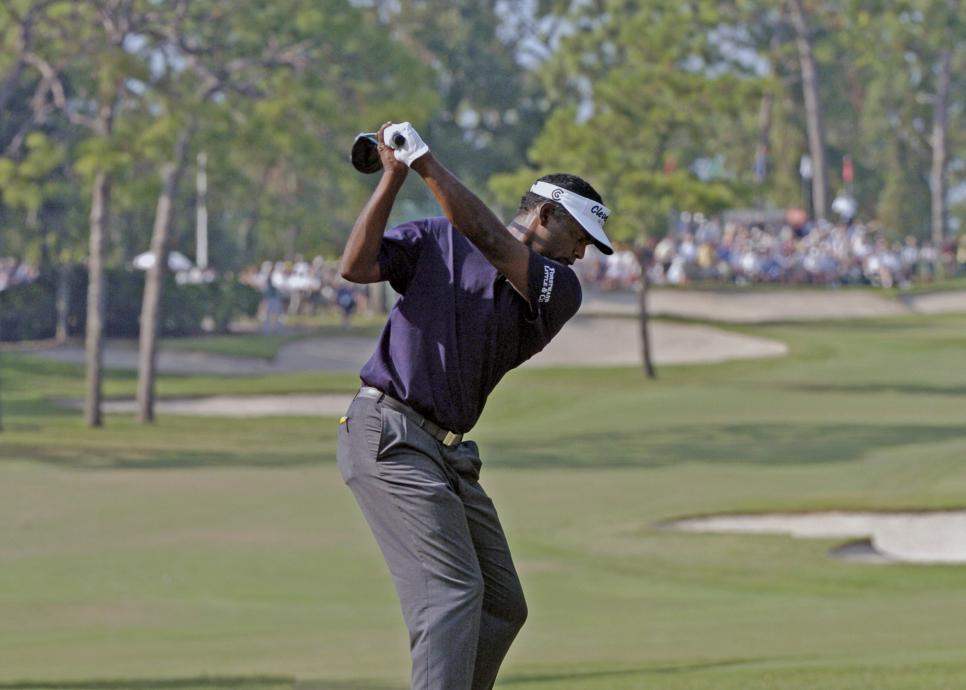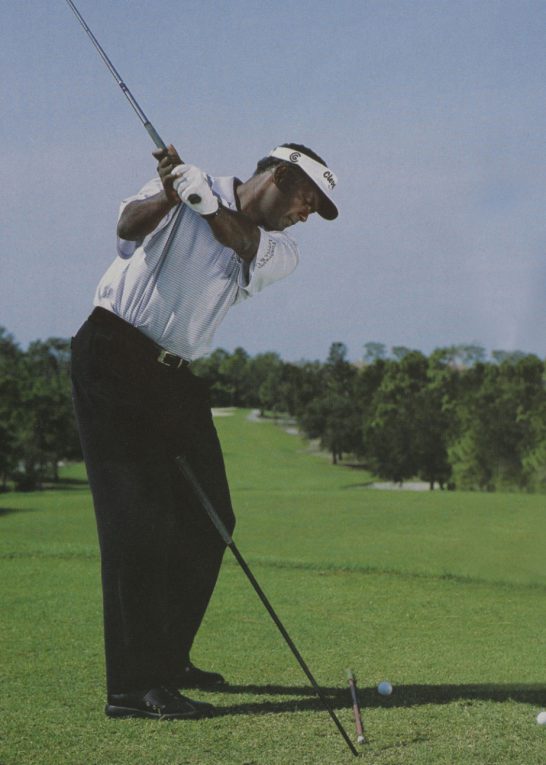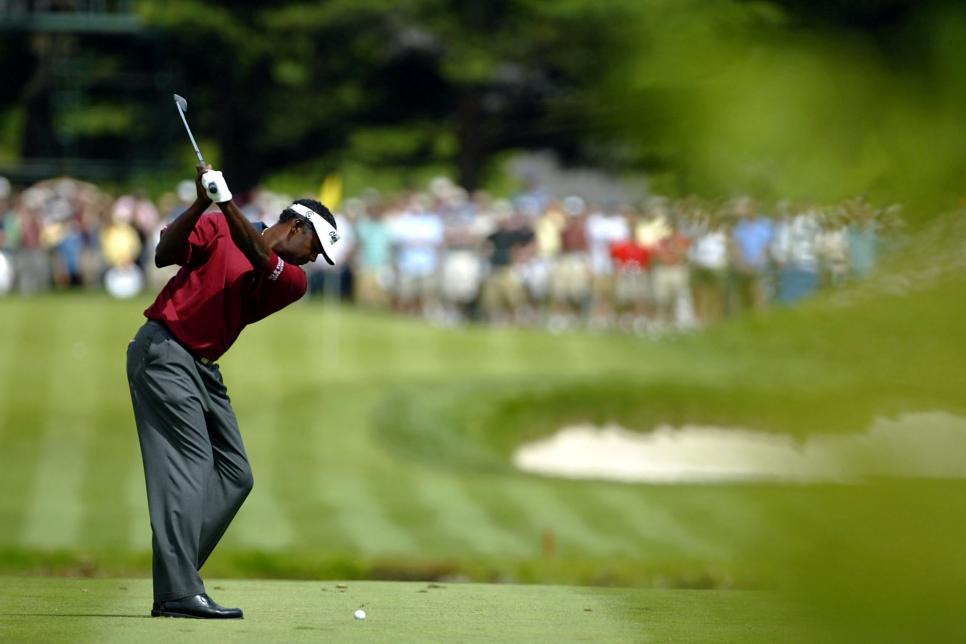Vijay Singh’s 2004 season was undoubtedly his best on the PGA Tour and one of the most memorable runs in modern golf history. At 41, Singh captured nine total victories that year, including the PGA Championship, and ascended to No. 1 in the Official World Golf Ranking—a title held by Tiger Woods for the previous six years.
Overthrowing Woods at the height of Tigermania was not an easy feat. Singh attributed his historic year largely to his ball-striking consistency, which led to scoring opportunities.
In 2004, Singh led the PGA Tour in multiple stat categories. To name a few, he was first in scoring average, total birdies (484), par-4 scoring, par-5 scoring and strokes gained/off the tee. He was second in greens in regulation at 73.03 percent.
To put it simply, Singh was a well-oiled machine. And if you’re like me, you might be wondering how he got everything to click simultaneously.

After searching the Golf Digest Archives, I found an article from January 2005 in which Singh said, “My nine-victory season was built on how I played in 2003, and the work I did in November and December [of that year].”
Below are a few of the driving and approach-shot insights that Singh shared in the article. Try his keys to boost your own game from tee to green.
In the January 2005 article, Singh revealed that precision off the tee was a primary focus heading into the 2004 season.
“One of the main things I wanted to improve from 2003 was my consistency with the driver,” Singh said, “I did that by making my swing a little shorter and tighter.”
He accomplished that by adjusting his top-of-swing position, limiting how far back he took the club.
“Everyone used to believe that you needed a long, loose backswing to hit the ball far. It isn’t true,” Singh said. “I’ve worked to make my backswing more compact and controlled, and I’m 10 yards longer with each club—not to mention straighter—than I was three years ago.”
This shortened motion allowed Singh to keep his swing shape consistent, which he said was critical to his accuracy with the driver.
“I hit my best shots when my club goes back and comes through on the same plane,” he said.
Using the drill below, Singh worked to refine his swing plane.
“To keep track of this, I stick a shaft into the ground at the angle you see here and lay another shaft on the ground along my target line, just inside the ball.”
“With those shafts in place, I practice with every club, swinging the club back and through so it’s just above the angled shaft,” Singh said.

He also shared that he minimized the chance of hitting hooks off the tee by paying more attention to his clubface position at the top of the backswing.
“I don’t want to miss shots to the left, so I hit a lot of balls with my caddie behind me, making sure my clubface is square to slightly open [the club’s toe pointing downward] at the top of my backswing,” Singh said.
“Have a coach or friend check your [clubface] position at the top. You’ll understand why your shots fly the way they do,” he said.
Short irons were another area of Singh’s game that took priority heading into the 2004 season.
“I drove it well last year but wasn’t taking advantage of that with my short approaches,” Singh said. “You have to be able to target the flag with your short irons to score.”
Singh’s key to landing those shots close? Proper alignment.
“I worked a lot on my alignment—being off even slightly is the difference between a makeable birdie and a good two-putt,” he said.
Singh’s best strategy advice with the irons was simple: Be aggressive.
“I’ve heard people say it’s better to take more club and swing easy, but I like to play the opposite way when it comes to club selection,” he said.
“I love it when I have a yardage that’s just past max—like 146 or 147 yards, when my 9-iron goes 144,” Singh said. “Then I can hit a full shot and make a good, solid swing.”

“For the average player, the most important number to know is the distance to carry a shot to the front of the green, not the flag,” he said, “That’s assuming you’re realistic with your carry yardages.”
Now that you know some of what Singh did to produce his monster year, try applying his keys to your own game. You might be surprised how much you improve when you focus on these fundamentals.










